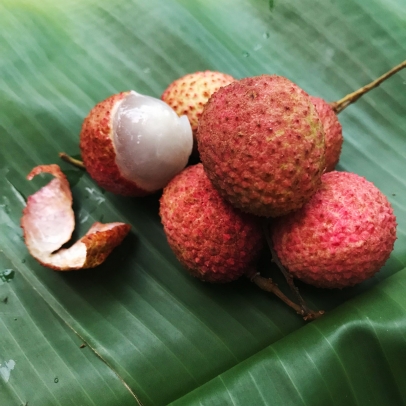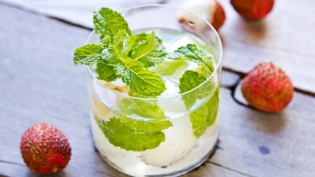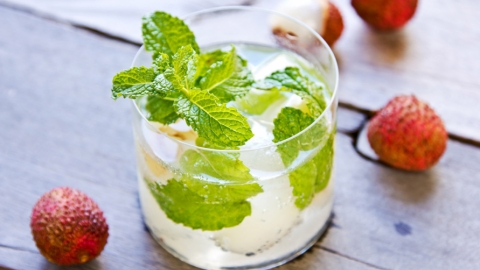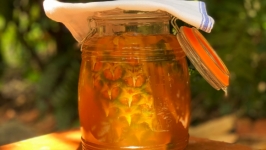Welcome, Short, Sweet Lychee Season
Consider the lychee. When you bite into the ping-pong-ball sized fruit, its thin, leathery skin cracks to reveal a burst of sweet, fragrant juice. The translucent flesh, surrounding a large, shiny seed, is just tart enough and almost perfume-like. Some compare the lychee to a grape, but that doesn’t do justice to the lychee’s delicate freshness and juicy, not watery, quality.
With its unpredictable growing habit and short season (the end of May to early June), the lychee (Litchi chinensis) is a member of the soapberry family and close relative to the longan, the smaller, golden-brown fruits that make their appearance later in the South Florida summer.
The past year’s lychee season was a disaster for most growers, who hoped this year would be better for the fickle fruit. On the plus side were the cold snaps. On the other hand, many fruit trees have been recovering from Hurricane Irma. A new cloud in the form of a pest, the Lychee Erinose Mite, looms over the horizon. This is not a fruit for growers who are faint of heart.
Best Way to Eat Lychee
Like your favorite mango, the lychee – also known as litchi, or mamoncillo chino in Spanish – should be savored out of hand when fully ripe and freshly harvested to best appreciate its ambrosial, floral flavors. They’re also delicious very cold or even slightly frozen. If your only experience with lychees is canned, in heavy syrup, go out of your way – right now – to find the fresh fruit. Lychees are nutritious, high in potassium and vitamin C, about 125 calories per cup of pulp.
Fresh lychees do well in Lychee Martinis (Lychees Online has a page dedicated to this topic) and in a simple vodka cocktail called Lychee Drops (see left). Consider a simple sorbet or adding them to a fruit salad. The Tropical Fruit Growers of South Florida, a good local source for all tropical fruits grown here, has lychee recipes. Brooks Tropicals showcases lychees, including a recipe for Lychee Ginger Sorbet.
Growing Your Own
Despite their challenges for commercial growers, lychee trees can be a good choice for your backyard, provided you offer protection from the wind. The attractive trees feature dark green foliage and red fruit and can grow to 40 feet, though most growers keep them to 10-15 feet. Flowers are pollinated by bees and flies. Popular varieties include ’Mauritius’, ‘Brewster’, ‘Emperor’, ‘Hak Ip’ and ’Sweetheart’. They are somewhat cold- and drought-tolerant and do best in well-drained soils.
Finding Lychee
Lychees are harvested from mid-May through July. Find them at farmers markets and roadside stands in the Redland and Homestead agricultural area. Look for ripe fruits – they do not ripen after picking. To store, keep in the refrigerator. Freeze whole unpeeled fruits in zip-top bags.
Bee Heaven Farm – Check out their offerings online. Shop at their stand Sunday 9-2 at Pinecrest Gardens farmers market.
LNB Groves – They're selling lychee from their groves Sun 9-2 at Pinecrest Gardens farmers market.
Robert Is Here – This family-owned fruit stand has plenty of fruits, including Mauritius and Black Leaf, known for its smaller seed.
Taste of Redland – You'll be hearing more from this new grove in the Redland. They're shipping 5-lb boxes of Mauritius lychee.
Lychee Miami – This roadside stand at 87th Avenue and SW 112 St. is selling lychees every day at 1pm until sundown.
Miami Fruit – They harvest lychee and ship out boxes.
Yellow Green Farmers Market – Farm Fresh Raw Foods (booth 177-179) is selling lychee. Other produce vendors in the massive market may also carry lychee.
So seize the moment, lychee lovers. This magnificent little fruit is the entree to South Florida’s splendid subtropical summer of fruits.










